In today’s world, everything is all about convenience. Even the smallest thing that isn’t easy can feel annoying – and so why would you keep unplugging your charger cables when you always use them in the same place?
Whether it’s a phone cable by the side of the bed, or a laptop cable under your desk, some wires just have a home. And leaving them plugged in means that they’re always really easy to use.
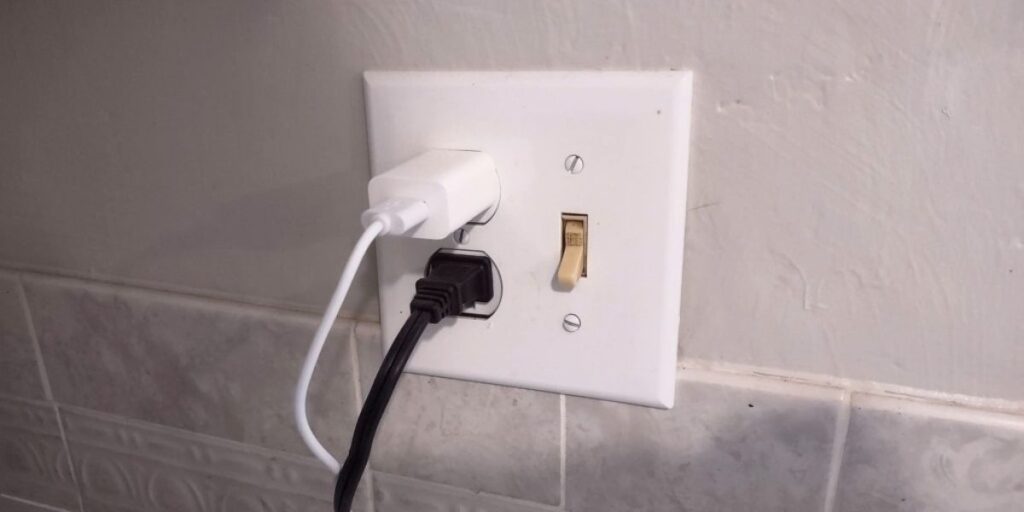
But one question I get asked a lot is – are you wasting electricity by having your chargers plugged in all the time? Would you actually save money on your electricity bill if you unplugged them?
Let’s find out…
Does a charger use electricity when plugged in and not charging?
Using any kind of charger will use electricity when plugged in, even if it is not charging an item. However, they typically draw a very small amount of power – often less than 1% of their usual power draw when being used. So it may not be worth the effort to unplug them all the time.
Realistically, it would always be better to unplug any chargers you aren’t using, but that may not be convenient for you. You might return to using the same charger frequently, or you might have things plugged into an outlet that is hard to reach – behind furniture, for example.
The more powerful the electrical device, the better it is to unplug your charger for them when it’s not being used. But for most household items, leaving it plugged in isn’t going to add huge sums to your electrical bill.
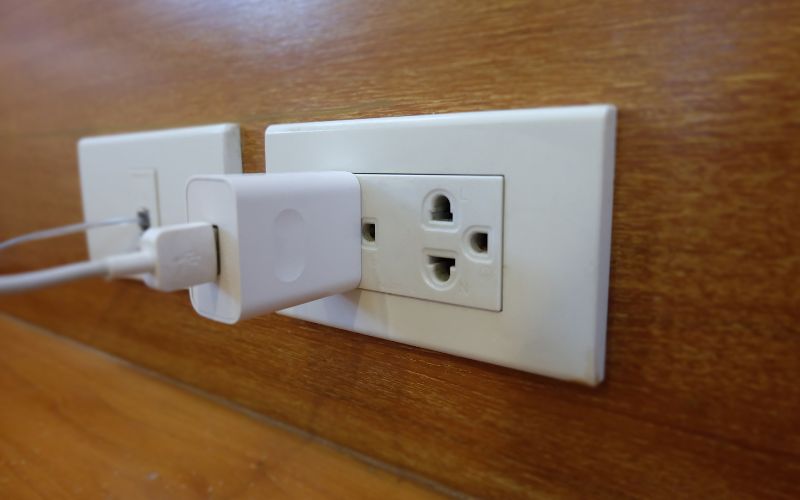
How much electricity does a phone charger use when left plugged in?
It’s hard to measure exactly how much power a phone charger uses when left plugged in, because it is lower than most electrical meters can determine – so less than 0.1 watt. Phone chargers have a minuscule power draw when not being used to charge a phone.
Phone chargers will use anywhere between 4 watts and 45 watts for charging when they are plugged in – so it’s already quite a low amount, and the higher wattages are only for the latest phones with dedicated fast-charging plugs and cables.
So with most phones using around 4-10 watts to charge, it’s no real surprise that the charger uses such a tiny amount when unplugged. After all, the real draw on the power is the battery on the phone that needs charging.
Does leaving laptop chargers plugged in waste electricity?
Laptop chargers will waste electricity when plugged in but not attached to the laptop, but the amount is tiny – less than 0.1 watt. Leaving it plugged into a laptop with a full battery will draw more power as it maintains the battery, so it’s best to unplug it from the laptop, if not the wall.
It’s hard to say exactly how much power a laptop charger draws when plugged into a laptop that is switched off – it depends on how full the battery is, and how powerful the laptop is. Typically expect it to draw around 10-20 watts with a full battery.
So you don’t need to worry too much about unplugging the laptop charger from the wall if you’re concerned about energy use – just as long as you unplug it from the laptop.
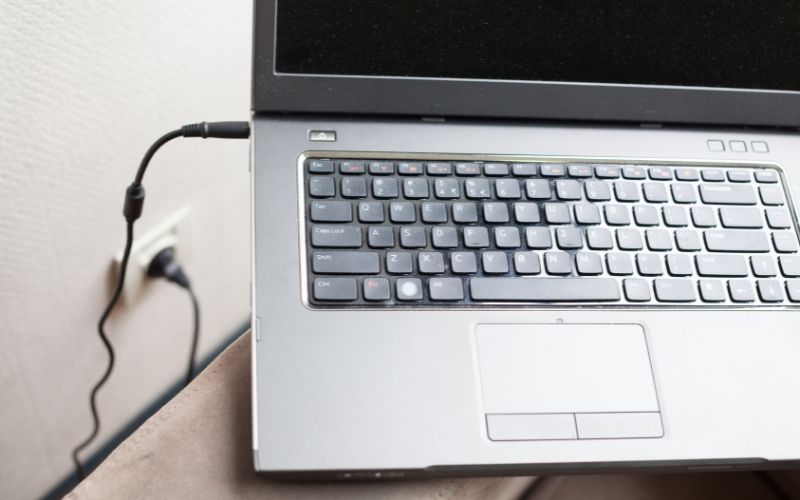
Does leaving the car charger plugged in use electricity?
Leaving a car charger plugged in when not being used to charge a car does use electricity – anywhere between 3 watts and 12 watts depending on the model. It’s best to turn the charger off as, if left always on, you will be paying a lot extra.
Electric car chargers draw a hefty amount of power from the wall – about 7.6 kilowatts – so it’s not a huge surprise that they still have a (relatively) significant power draw when they are not switched on.
While most chargers around the home don’t draw much, it’s definitely good value to turn off your car charger when you’re not using it.
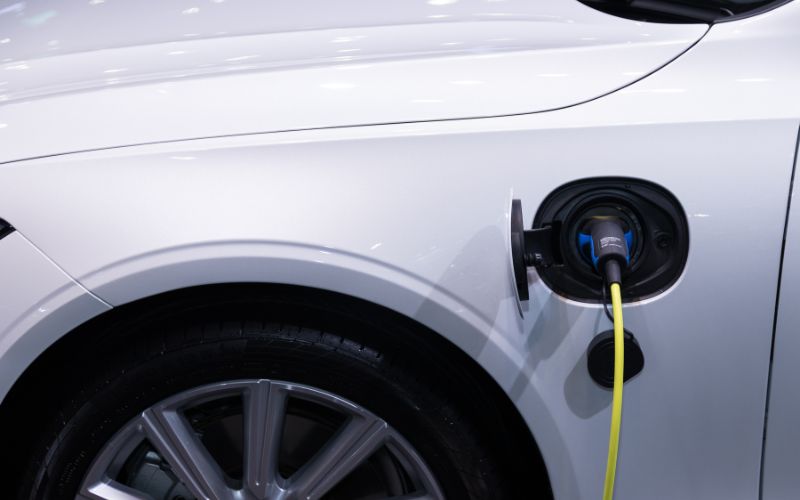
Does leaving things plugged in cost money?
Leaving any electrical item plugged in will use electricity – even if it is a very small amount. Over time this will be felt on your electricity bill, but for most household chargers the cost will be minimal – a few cents at most.
Let’s stick with the examples of a phone or laptop charger, and a car charger. If we take an average electricity cost of $0.14 per kilowatt-hour, here’s how much you’re paying by leaving it plugged in.
| Charger | Power draw | Cost to run (1 hour) | Cost to run (24 hours) | Cost to run (1week) | Cost to run (1 year) |
|---|---|---|---|---|---|
| Phone/laptop charger | 0.05 watts (assumed) | $0.000007 | $0.0002 | $0.001 | $0.06 |
| Car charger – 3 watt | 3 watts | $0.0004 | $0.01 | $0.07 | $3.67 |
| Car charger – 12 watt | 12 watts | $0.002 | $0.04 | $0.28 | $14.68 |
A phone or laptop charger barely costs you anything, even left plugged in for an entire year – just 6 cents for the year.
But a car charger can cost you a lot more.
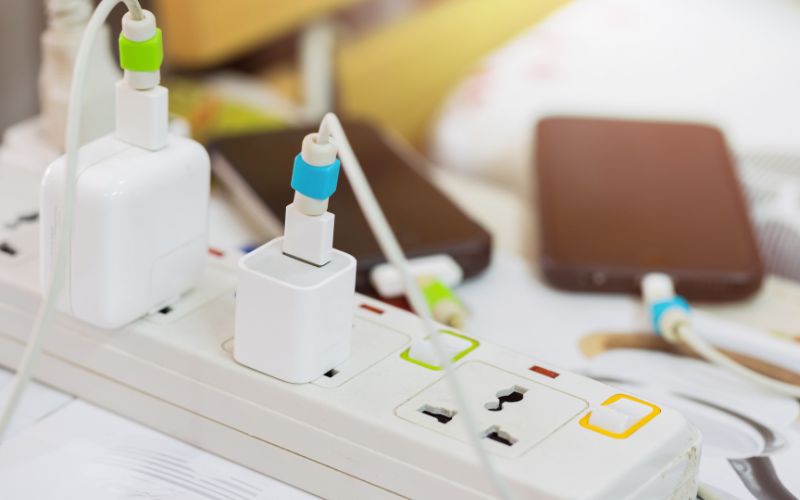
Will unplugging everything save electricity?
Unplugging everything electrical in your home that you aren’t using will save electricity and help to bring your bills down – but how much depends on the devices in question. Most electrical devices use very little power when not in use.
In an ideal world, you would go around your home and switch everything off but the money you save might only be a few cents a year, and so whether it’s worth the effort or not depends on your situation and where your plugs are situated.
Should chargers be unplugged when not in use?
Ideally yes, chargers should be unplugged when you aren’t using them, but most phone and laptop chargers draw such a small amount of power that you won’t save a lot of electricity or money by doing so. Chargers should be unplugged from the devices when batteries are full and they are not in use though.
That’s less of an issue for phones since really our phones are always ‘in use’ – in that they’re available to receive messages. Plus their smaller batteries aren’t drawing as much as a laptop’s will.
But if you have a laptop and you’re not using it, it’s fine to leave it plugged in to charge up but then remove the charger from the laptop, if not the wall at least. You’ll save a bit of power and protect your laptop’s battery too.
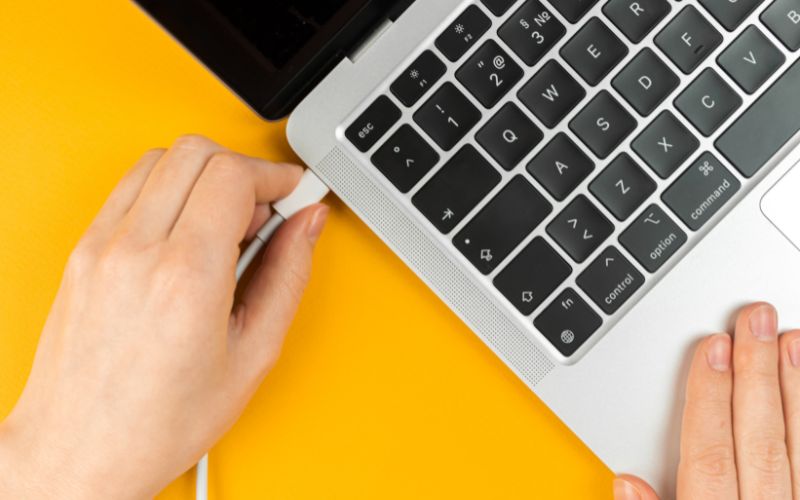
The Bottom Line
Everyone is always looking to save money where they can on their utility bills, but unfortunately unplugging phone and laptop chargers isn’t suddenly going to make a massive difference to the amount you spend each year.
Still, if the plugs are easily accessible then do try to unplug them where you can – every little bit adds up, after all. But if it’s easier to leave your chargers plugged in, you don’t need to panic about how much power you’re wasting – it’s barely any.
